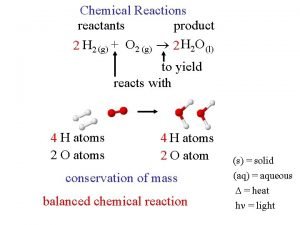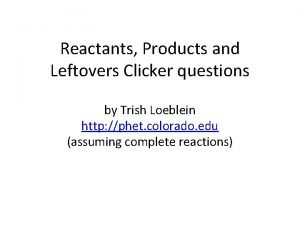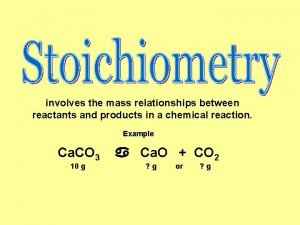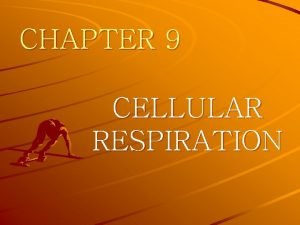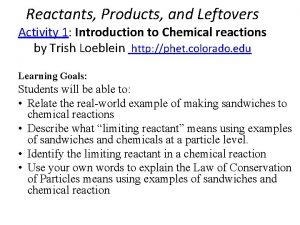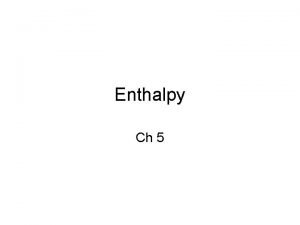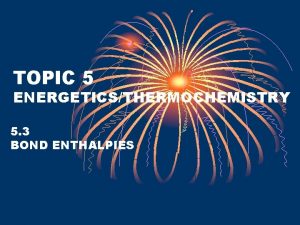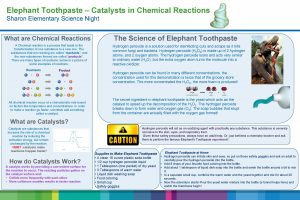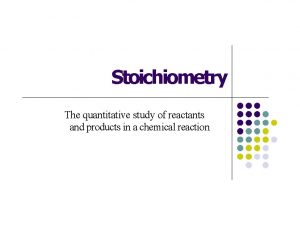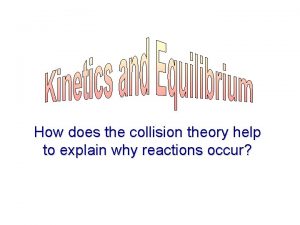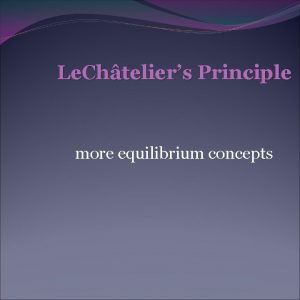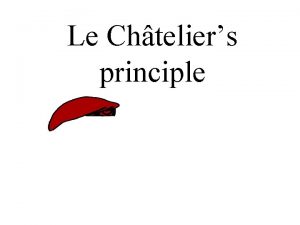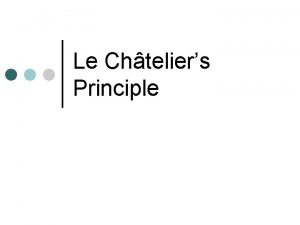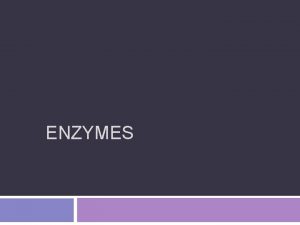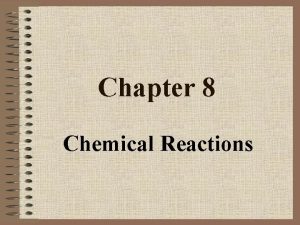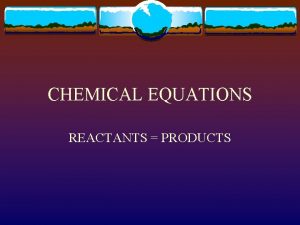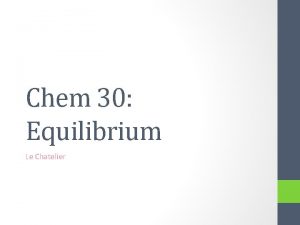Le Chteliers principle Kc Products Reactants The significance













- Slides: 13

Le Châtelier’s principle

Kc = Products Reactants The significance of • Kc values • Kc = If Kc is small (0. 001 or lower), [products] must • be small, thus forward reaction is weak Products Reactants

• Kc = Products • Reactants If Kc is large (1000 or more), [products] must be large, thus forward reaction is strong

• Kc = Products • Reactants If Kc is about 1, then reactants and products are about equal but not exactly since they may be raised to different exponents Products = Reactants

Stresses to equilibria • Changes in reactant or product concentrations is one type of “stress” on an equilibrium • Other stresses are temperature, and pressure.

Why are these called stresses?

The response of equilibria to these stresses is explained by Le Chatelier’s principle: If an equilibrium in a system is upset, the system will tend to react in a direction that will reestablish equilibrium

Thus we have: 1) Equilibrium, 2) Disturbance of equilibrium, 3) Shift to restore equilibrium Le Chatelier’s principle predicts how an equilibrium will shift (but does not explain why)

Summary of Le Chatelier’s principle E. g. N 2 + 3 H 2 2 NH 3 + 92 k. J Amounts of products and reactants: equilibrium shifts to compensate 2 NH 33++92 NNN 222 ++ 3 H 3 H 2 2 NH 92 k. J shift right N 2 H 2 shift left N 3 H 2 2 NH 33++92 92 k. J NN 222+++3 H 3 H Temperature: equilibrium shifts to compensate: Heat NN 22 ++ 3 H 3 H 22 2 NH 33++92 92 k. J shift left 92 k. J Pressure (due to decreased volume): increase in pressure favors side with fewer molecules Catalysts: does not influence reaction

Le Châtelier and the equilibrium law • The response to changes in an equilibrium can be explained via the equilibrium law • Consider C 2 H 4(g) + H 2 O(g) C 2 H 5 OH(g) Sample [C 2 H 5 OH] [0. 150] values Kc = , 300 = [C 2 H 4] [H 2 O] [0. 0222] [0. 0225] • What happens if 1 mol C 2 H 5 OH is added? • Now mass action expression = 2300 • Recall Kc does not change (for a given temp) • To reestablish equilibrium we must reduce 2300 to 300 ( top, bottom = shift left) • The equilibrium law explains Le chatelier’s principle (compensating for stresses)

Pressure and equilibrium • Pressure will increase if: 1)volume decreases, 2) a (unrelated/inert) gas is added • Only the first will cause a shift in equilibrium… C 2 H 4(g) + H 2 O(g) C 2 H 5 OH(g) [C 2 H 5 OH] [0. 150] Kc = , 300 = [C 2 H 4] [H 2 O] [0. 0222] [0. 0225] • If volume is reduced, for example, by half, we will have [0. 300]/[0. 0444][0. 0450] = 150 • To get back to 300, we must have a shift to the right (fewest number of particles) • However, if pressure is increased by adding an unrelated gas [ ]s do not change

Catalysts, Le Châtelier questions • The last factor to consider is the addition of a catalyst: this does not affect an equilibrium • A catalyst speeds both forward and reverse reactions (by lowering the activation energy) • It allows us to get to equilibrium faster, but it does not alter equilibrium concentrations

Q- predict the color of the “NO 2 tubes” if they are heated and/or cooled (the reaction is endothermic when written as): N 2 O 4 (colorless) 2 NO 2 (brown)
 What are the reactants in this chemical reaction?
What are the reactants in this chemical reaction? Phet reactants products and leftovers
Phet reactants products and leftovers Relationship between reactants and products
Relationship between reactants and products What are the reactants and products of photosynthesis
What are the reactants and products of photosynthesis Reactants products and leftovers
Reactants products and leftovers Enthalpy of products
Enthalpy of products Enthalpy diagram worksheet
Enthalpy diagram worksheet Reactants products and leftovers
Reactants products and leftovers Bond enthalpy formula reactants minus products
Bond enthalpy formula reactants minus products Chemical reactions reactants and products
Chemical reactions reactants and products Elephant toothpaste reactants and products
Elephant toothpaste reactants and products Stoichiometry is defined as the quantitative study of
Stoichiometry is defined as the quantitative study of Reactant and products
Reactant and products Types of reaction
Types of reaction
